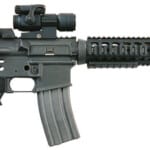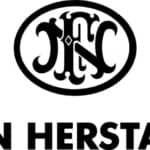
The L1A1 Self-Loading Rifle, often dubbed the "British FAL," holds a significant place in the history of small arms, particularly within the military institutions of the United Kingdom, Australia, and Canada, among others. This article explores the comprehensive timeline of this renowned rifle, tracing its roots from conception to usage, discussing the manufacturing companies involved, and situating it within the broader context of world firearms history.
Development of the L1A1
The L1A1 is a derivative of the Belgian Fabrique Nationale's (FN) FAL rifle. Its design's genesis dates back to the late 1940s when FN Herstal, under the chief designer Dieudonné Saive, began work on a new battle rifle. The FAL (Fusil Automatique Léger - Light Automatic Rifle) was a selective fire battle rifle that saw extensive use in over 90 countries and was produced in many variants.
In the wake of World War II, the UK was exploring options to replace the venerable Lee-Enfield bolt-action rifle with a modern, semi-automatic rifle. Initial development focused on the .280 British cartridge, but political and logistical pressures from NATO allies, especially the United States, resulted in the eventual adoption of the 7.62x51mm NATO round.
As the British sought a design that could accommodate this larger round, they tested various rifles, including the Belgian FN FAL. Recognizing the potential of the FAL design, the British set about modifying it to suit their specific needs, and thus, the L1A1 was born.
Manufacture
The L1A1, known as the SLR (Self-Loading Rifle) in British service, was predominantly manufactured by the Royal Small Arms Factory (RSAF) Enfield in the UK. Other manufacturers included the Birmingham Small Arms Company (BSA), which made the rifles under contract for the British government, and the Royal Ordnance Factory (ROF).
Australia produced their version at the Lithgow Small Arms Factory, while Canada made a variant known as the C1 at the Canadian Arsenals Limited.
Manufacture started in the late 1950s, around 1954. The exact production figures are hard to pin down, but estimates suggest that the RSAF Enfield alone produced over 100,000 between 1954 and 1956. By the end of production in the late 1980s, several hundreds of thousands of L1A1s had been manufactured worldwide.
Usage
The L1A1 entered British service in 1954 and quickly became the standard infantry rifle for British and Commonwealth forces, serving in numerous conflicts worldwide. Its use spanned several decades, with it seeing significant service during the Malayan Emergency, the Indonesian Confrontation, and the Falklands War.
The Australian and Canadian variants also saw extensive service in their respective militaries. The Australian L1A1 was used in the Vietnam War, while the Canadian C1 was used by Canadian peacekeeping forces worldwide.
Aside from military use, the L1A1 has also been used by various police forces and government agencies worldwide. For example, the Australian police used the L1A1 during the infamous Sydney Hilton bombing in 1978.
Cartridge and Performance
The L1A1 was chambered for the 7.62x51mm NATO round, a powerful and reliable cartridge that had also been adopted by the US for their
M14 rifle. The cartridge is a rimless bottleneck with a .308 inch (7.82mm) diameter bullet. Its typical muzzle velocity is around 2,800 feet per second, providing effective range and stopping power.
In terms of performance, the L1A1 was praised for its reliability and accuracy. While heavier and longer than some contemporaries, it was known for its durability in harsh conditions, a vital attribute for military service.
Predecessors and Successors
The L1A1's predecessor was the .303 Lee-Enfield, which had served the British and Commonwealth forces through both World Wars. The Lee-Enfield was a bolt-action rifle, and the switch to the semi-automatic L1A1 represented a significant step forward in terms of firepower.
The L1A1 was replaced by the SA80 (L85A1) in British service, a bullpup-style rifle chambered in the smaller 5.56x45mm NATO round. The L85A1 entered service in the mid-1980s, with the transition being completed by the early 1990s.
Comparisons with Other Rifles
During its service life, the L1A1 would have seen comparison with several other significant rifles worldwide. The American M14, also chambered in 7.62x51mm NATO, was a close contemporary, although it was a fully automatic rifle compared to the semi-automatic L1A1. The Soviet AK-47, with its 7.62x39mm round, was another contemporary, although its design philosophy focused more on simplicity and volume of fire.
In the NATO bloc, the German G3 and the Belgian FN FAL were also prominent 7.62x51mm rifles. The G3, like the L1A1, was a battle rifle designed for accuracy and power, while the FN FAL had the versatility of being selective-fire, allowing for both semi-automatic and automatic fire modes.
Conclusion
In conclusion, the L1A1 represents an important chapter in the history of military small arms. From its origins in the Belgian FN FAL design to its extensive service history across multiple continents, the L1A1's legacy is one of reliability, power, and endurance. This British interpretation of a classic design continues to inspire firearms development to this day.
Read more about the L1A1 and related weapons here:



If you know of any forums or sites that should be referenced on this listing, please let us know here.


